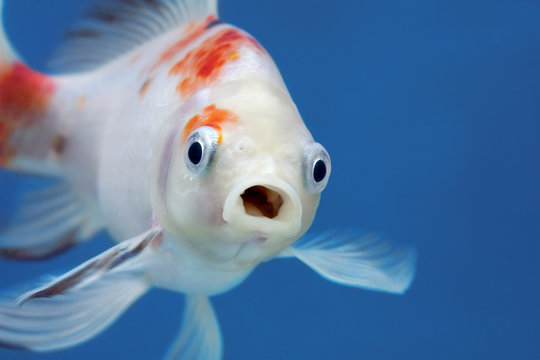Ignore this and you’ll only prove me right: climate change and global warming are hot topics that have often been dismissed or taken for granted, but their discussion has existed for longer than you might think. Just like how people didn’t believe the very first warnings of the potential catastrophes caused by global warming, people nowadays have lost the sense of urgency to fight for a cause that would most likely affect their future and the future of generations to come.
If you think about it, pet fish have all that they need: their owners feed them and clean their bowls to add decoration to their homes–pretty much a royal fish life. Yet, somehow they still swirl around their tank, clamoring for more food, and as a human you would feel pity and give it more, and more, and more.
We keep saying that fish have short term memory loss—but what if they are blinded by the simple need of wanting more than what they already have? Your fish must be gazing at its surroundings—wherever you may put its tank—baffled by all your belongings, and it might even envy you. Perhaps, it might want to collect as many prized possessions as you, but is physically incapable of doing so.
What would it serve to them, to have more decoration in their bowl? Maybe it’s because they get fed up with what they see every single day and want to add a little color to life. Just maybe. Now what does that have to do with you?
Think about that one jumper, or those trousers, or that pair of shoes you have been wanting for so long, but you cannot buy because your closet is already full. Think about when you find that one decoration you have always wanted but you already bought everything that there is to buy. Think about when you hesitate to decide between riding the bus—an eco-friendly gesture but one in which you’re cramped in between a crowd of people—and being in your car, comfortably seated but polluting the air with your gas consumption (unless, of course, you have a Tesla or whatnot). Now, do you see?
What happens if the fish’s owner abandons it? Who will feed it then? How will they survive? Exactly—it cannot. Take away the source of abundance and you will be left with nothing. Take away that simple source nature left for us and WE will have nothing. Maybe not as sudden as death, but eventually we will all be going so fast with our consumption that when we arrive at the edge of a cliff, we risk falling off.
You are a fish and so am I. What do we do now?
Since efforts in spreading awareness about climate change and global warming have not been successful enough to persuade the entire world to stop using fuel and start using renewable resources, the best we can do as individuals are little gestures that can go a long way.
Let’s start with water. You can save gallons of water with merely a bucket. That’s right—a bucket.
By the time you open your tap for a bath or shower and the time the water reaches that warm temperature (unless you’re a cold water lover), you have wasted a lot of water. To find out how much water is wasted, you would multiply the average flow of water—which is 2.1 gallons per minute—by how long you wait for the water to get warm and how many times you shower per week.
Say it takes around two minutes for your water to get warm and that you take a shower every morning. If my math is correct, you would waste 29.4 gallons a week, 126 gallons ish a month, and 1,533 gallons a year. These 1,533 gallons of water can be saved if you take the time—time that is shorter than your social media shorts—to put a bucket under your tap whilst waiting for your perfect water temperature, and the water you’ve collected can be used for plants or small chores!
Now onto clothes. You can probably guess where I’m going with this.
Some of you may be familiar with reusing clothes because you have one or more older siblings from whom you inherit all kinds of things. At first you might think that having brand new clothes is better than buying second hand; but, what if I told you that you are saving the planet—and your money—by choosing second-hand over brand new? If you’re interested, according to the World Bank, around 20% of wastewater is from fabric dyeing and treatment, 87% of the total fabric input is discarded and 10% of annual carbon emissions is caused by the fashion industry, which is more than international flights and maritime shipments combined. You can do so much with the simple act of reusing clothes; you can even be a trendsetter if you encourage your friends and peers to do the same. Isn’t that cool?
Of course, there are more methods you can find on the internet (which I highly encourage you to do). These small gestures—unlike methods of spreading fear and pressure that discourage people from acting altogether—prove that if we have the will, we can all come together and stop climate change, no matter how cliché that sounds.
We are stubborn living beings, so let’s be stubborn in protecting our planet.



